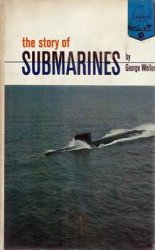Facing the northern sector of the West Bank, Major-General Elad Peled, at the head of his armoured division, which included two armoured brigades, waited to discern the main Jordanian thrust. None was forthcoming, however, from either the Syrians or the Jordanians.
The Jordanian forces in the Samaria sector comprised three infantry brigades, one reinforced armoured brigade, two independent battalions of infantry and two independent armoured battalions. The key town of Jenin in the north, over which such heavy fighting had taken place in the War of Independence, was held by the Jordanian 25th Infantry Brigade reinforced by a tank battalion. This brigade was responsible for the approaches southwards to the Jordan valley from Tubas in the north. The Princess Alia Brigade based on Nablus was responsible for deployment in the coastal plain in the area of Tulkarem. A further brigade, with headquarters in Ramallah, defended Latrun and the northern part of the Jerusalem Corridor. The main armoured reserve was the 40th Armoured Brigade based at the Damya Bridge on the Jordan.
Judea and Samaria can be likened to a giant staircase leading up from the sea to the central watershed plateau and down again, though in much steeper steps, to the Jordan valley. From the shore of the Mediterranean, the first step, one ascends through the foothills (the ‘shephela’ in the Bible) to the third step (the lower slopes) and the fourth step (the upper slopes) to the plateau. On the descent, the lowest step (from the slopes to the Jordan valley) is a steep, near-perpendicular cliff of varying height. From the air, the relief of the central massif looks like a huge fishbone: the spine is the watershed, and the wadis (river beds) running down from the watershed to the Mediterranean and the Jordan valley or Dead Sea, are like the ribs emanating from the spine. The two principal towns influencing the strategy of the Israeli forces in the campaign were Nablus and Jenin,
Which were also main crossroads. Jenin is located at the foot of the hills of Samaria, controlling the approaches to the valley of Jezreel to the north. Southward of the town is the Dotan valley, which opens west to the coastal plain. In history, this valley was the main route for the armies invading Samaria from the north. Nablus, some 18 miles south of Jenin, lies in a valley between the two mountains mentioned in the Bible, Mount Gerizim and Mount Ebal. Two roads run between Nablus and Jenin: the eastern road passes through Tubas, while the western road runs through Silat ed Dhahar and Dir Sharaf.
In the afternoon of 5 June, General Elazar, GOC Northern Command, ordered Major-General Peled to attack the Jordanians with the immediate purpose of neutralizing the artillery units in the Dotan valley, which were endangering the Ramat David air base. As a young officer in the Palmach, Peled had distinguished himself in the fighting for Safed during the War of Independence in which he was severely wounded. A graduate of the French Ecole de Guerre, he later commanded the renowned ‘Golani’ Infantry Brigade and, after his retirement from the Army, was to serve as Director-General of the Ministry of Education under his former Palmach commander Yigal Allon, who was Minister of Education. At a later stage, he entered municipal political life and was elected Deputy Mayor of Jerusalem under Mayor Teddy Kollek.
Peled’s forces crossed the Armistice Lines at 17.00 hours. The attack was accompanied by a concentrated Israeli Air Force bombardment of the upper Dotan valley artillery concentrations west of Jenin. An armoured brigade under Colonel Moshe Bar-Kochva, followed by an infantry brigade under Colonel Aharon Avnon, advanced on two axes, one towards Ya’abad to the west and southwards of Jenin, and the second towards Jenin from the west. At the same time, a diversionary operation was mounted by an infantry attack from the Beit Shean valley southwards, posing a threat to the Damya Bridge — this might have endangered the entire Jordanian deployment by preventing the Jordanians initially from concentrating their forces to meet the main Israeli thrust against Jenin. The Israeli plan to attack Jenin was based on a wide outflanking movement from the south, with a view to taking the high ground overlooking the city.
The Israeli armoured infantry under Colonel Bar-Kochva reached the Jordanian artillery concentrations, and after a fierce battle, took the area; his tank column then moved on to take the Kabatiya junction, thus cutting Jenin off from Nablus and most of the West Bank. The Jordanian armoured forces counterattacked, attempting a double envelopment of Bar-Kochva’s forces, and an armoured battle took place at night. But the Israeli armoured forces, with their 105mm-guns mounted in old Sherman tanks, proved more than a match for the Jordanian US-made Pattons: Bar-Kochva counterattacked the enveloping Jordanian forces and put them to flight. In conjunction with units of Avnon’s infantry brigade, Bar-Kochva’s forces now advanced into Jenin against a well-camouflaged Jordanian anti-tank concentration backed by 30 Jordanian Patton tanks. After beating off a Jordanian counterattack, in which the Jordanian forces
Fought with considerable bravery, Bar-Kochva’s forces moved to occupy the hills controlling Jenin from the south-east, while other units of the brigade occupied the hills to the south-west.
Meanwhile, as the Israeli forces reached the Police Station north of Jenin, the brigade reconnaissance unit reported a force of some 60 Jordanian Patton tanks advancing northwards from the direction of Tubas. Bar-Kochva moved his forces southwards to the Kabatiya junction and prepared to meet them, while Avnon’s infantry brigade continued to mop-up in the city and completed its capture by 13.00 hours. The advancing Jordanian armoured forces entered into battle with Bar-Kochva’s reconnaissance battalion, outflanked it and surrounded it completely. Bar-Kochva’s forces, which had been on the march for 24 hours and had engaged in very heavy and intense fighting, were in urgent need of regrouping and resupply. But now they were faced with a battle against a fresh Jordanian armoured force that established itself in a firm defensive position in and around Kabatiya while besieging Bar-Kochva’s reconnaissance battalion. Peled sent in air reinforcements to relieve the pressure on Bar-Kochva and allow him time to regroup and reorganize. The battle of Kabatiya was joined against the Jordanian force comprising units of the Jordanian 25th Infantry Brigade, under the command of Lieutenant-Colonel Awad Mohammed El Khalidi, and armoured reinforcements. The Jordanians threw back repeated Israeli attacks as fierce fighting continued in the area of the junction for some twelve hours. After nightfall, however, an Israeli tank company moving round the flank of the Jordanian forces succeeded in punching a hole through the Jordanian circle that had closed off the reconnaissance battalion. The surrounded troops moved out of their besieged position and rejoined the main body of Israeli forces, while the armoured battle continued at close range. Gradually, Bar-Kochva’s forces overcame the Jordanians at Kabatiya and broke through, advancing from the north towards Nablus.
As Bar-Kochva’s brigade was battling for Jenin and Kabatiya, Peled moved a second armoured brigade under the command of Colonel Uri Ram, passing it to the east of Mount Gilboa and Jenin with the purpose of opening up the Jenin-Tubas road in order to advance on Nablus from the east. After overcoming the forward Jordanian anti-tank concentrations. Ram’s forces broke through Tilfit and were then engaged in a long-range static armoured battle that continued throughout the day. The Jordanians engaged Ram’s advance units from high ground near Zababida, from which positions the Jordanian field of fire covered the road and the entire valley. Colonel Ram deployed along the heights on the eastern side of the valley. He sent small armoured units down into the valley to draw the Jordanian fire, so that the muzzle flashes of the guns would give away their locations. The battle raged till dusk. Towards evening, a Jordanian tank company that was observed moving was attacked by an air strike. As darkness fell, using the burning Jordanian tanks as reference points. Ram developed a night attack and reached the village of Akaba. The Brigade advanced and took Tubas by surprise. Ram left the bulk of his force at the junction covering the road from the Damya Bridge, on the assumption
That the Jordanian 40th Armoured Brigade could approach from that direction, and also because he was aware of further armoured units which had been unaccounted for behind him in the area of Tubas. Accordingly, he advanced to Nablus with only his reconnaissance battalion and a tank company.
The reports of the reconnaissance force were that the city of Nablus was quiet, and so Ram ordered them to enter the city. To the utter amazement of the Israeli troops, they were greeted by the citizens of Nablus crowding both sides of the road, cheering and applauding — mistaking the Israeli troops for an expected Iraqi armoured force that was due to move up as reinforcements from Damya. When an Israeli soldier tried to disarm an Arab and shooting erupted, the citizens of Nablus soon realized their error, and sporadic firing broke out. For some six hours, a confused battle took place in and around the western approaches to the city. Jordanian planning had always taken into account that the main danger to Nablus would be from Israeli forces attacking from the coast and not from the east. So Jordanian armoured forces were deployed to the west of the city along the road leading from the coast, while Jordanian infantry were deployed east of the city. So, at the eastern approaches, Ram’s forces fought Jordanian infantry, while on the western approaches an Israeli armoured force met and engaged Jordanian tank units. A close-range tank battle developed while units of the ‘Golani’ Infantry Brigade, which had been advancing with the armoured forces, entered the centre of the city and, in intense house-to-house combat, subdued the city by the evening of 6 June.




 World History
World History









